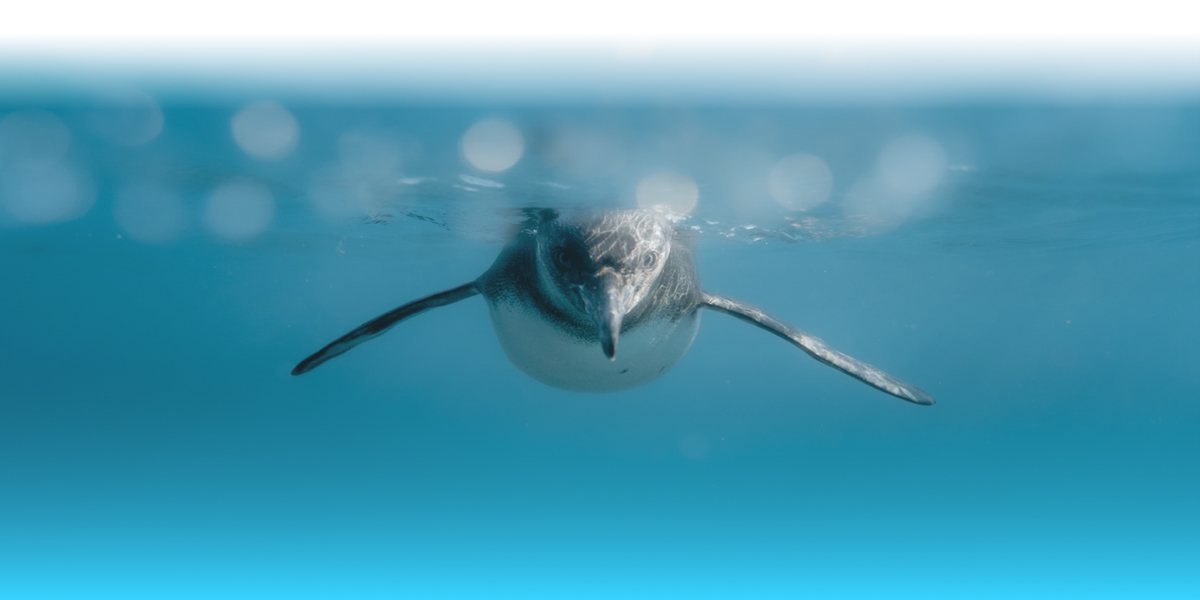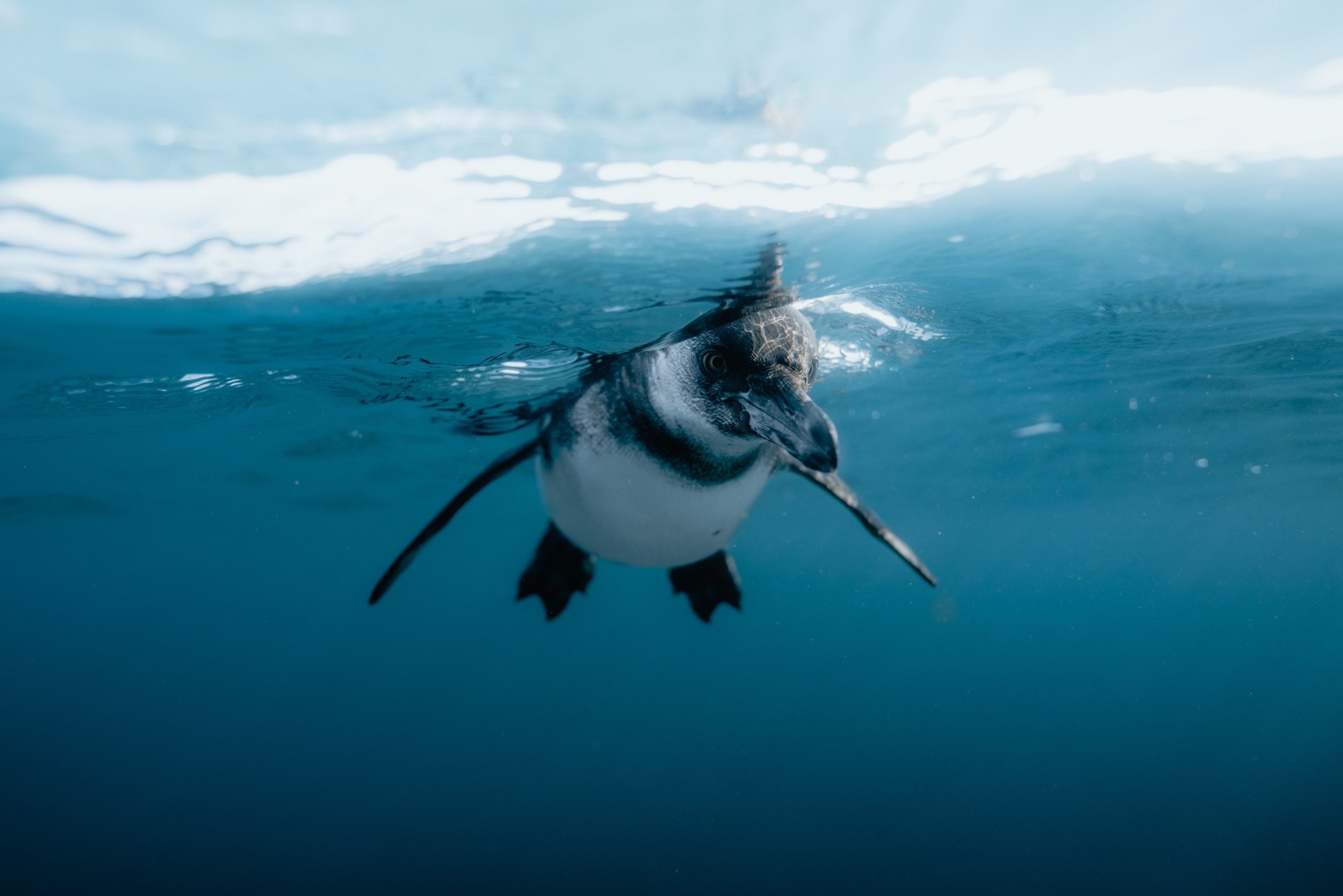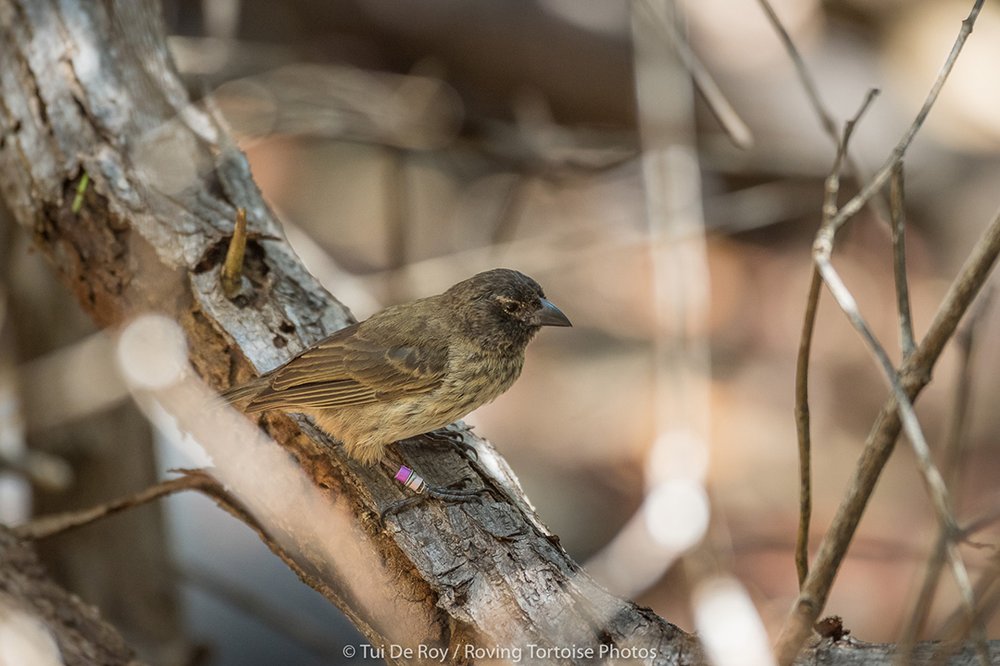
Written with the support of Francesca Cunninghame.
The Mangrove Finch is a Critically Endangered species that is found only in a small mangrove forest on Isabela Island and it is currently highly threatened by an invasive parasitic fly called Philornis downsi. The larvae of this fly can often lead to mortality in chicks and is pushing this endemic bird species to the brink of extinction. For the last four years, along with project partners and collaborators, Francesca Cunninghame and her team have been rearing finches in captivity and returning them to their natural habitat to increase the global population. Although there are fewer than 20 breeding pairs left in the Galapagos Islands, the mangrove finch team has released 39 fledglings into the wild and increased the population of juvenile mangrove finches by over 50%. This year, however, the team had different plans.
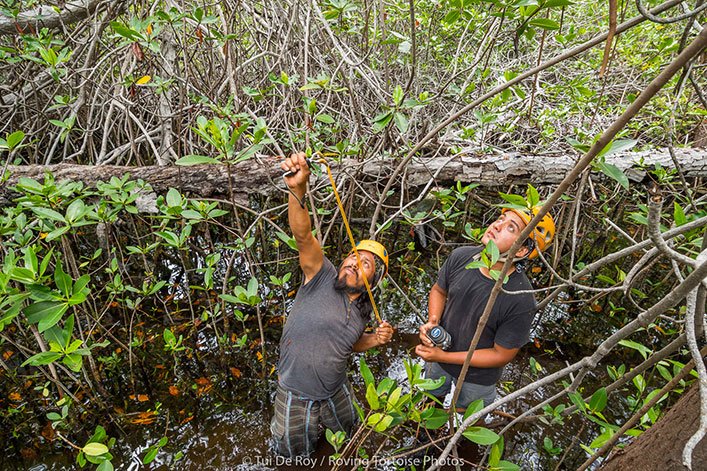
Even though captive reared finches survive long-term in the wild and some reproduced with wild finches, it is always better to lessen human intervention and lower the financial cost of the project. In other words, it’s better for mangrove finches to incubate and raise their own chicks, rather than have conservationists remove the eggs from the wild, incubate them and return them to their habitat. So, how can we protect the finches in the wild? A new short-term approach involving the use of permethrin (a chrysanthemum based insecticide) is being tested in the field until the Philornis downsi research team find a way of controlling the invasive fly. Scientists are basically injecting this insecticide into the base of finch nests to kill the parasitic fly larvae and thus lowering the mortality of chicks.
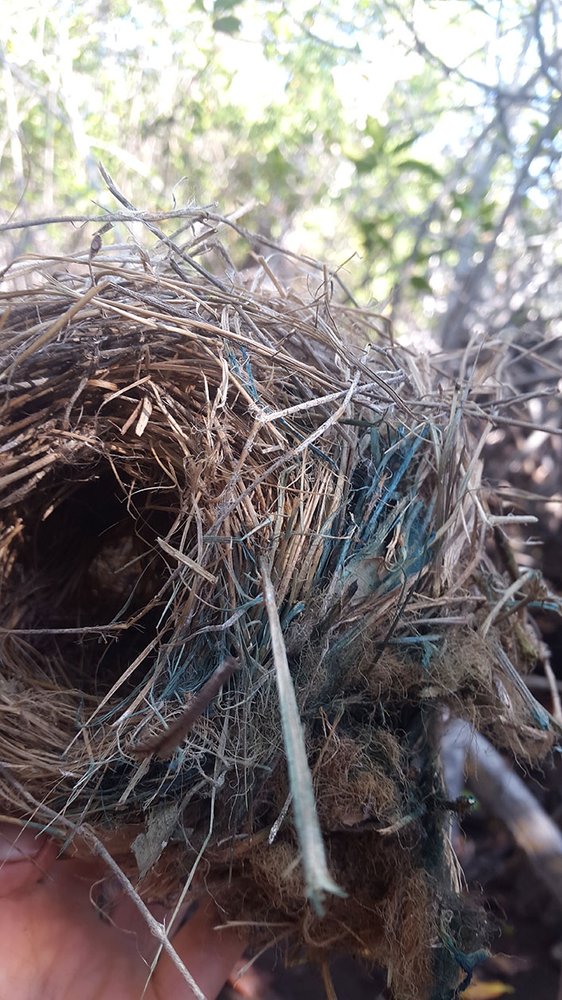
Scientists such as Mariana Bulgarella (University of Victoria) conducted studies on the impact of permethrin (Permcap) on passerine birds and Arno Cimadom (PhD student at the University of Vienna) used the insecticide on warbler finches on Santa Cruz Island. So far, no negative effects for birds have been shown when inserting permethrin at the base of finch nests. On the contrary, this has been a very effective method at killing the larvae of the Philornis downsi fly.
Results for the mangrove finches have been positive so far. This season, seven mangrove finches fledged in the wild from three injected nests that initially had the presence of Philornis downsi. In these cases, permethrin injections were effective at killing the parasites and enabling the chicks to fledge in healthy condition. Additionally, in 2017, 14 chicks fledged from injected nests, meaning a minimum of 21 chicks have fledged in the wild over two years from treated nests.
Nevertheless, it remains a short-term solution, as there are challenges associated with accessing and treating nests. Scientists must use climbing equipment and improvised scaffolding to reach the eggs high up in the 19-meter mangrove trees and use poles with syringes on them to be able to inject the bases of the nests. If possible, chicks were lowered to inspect for the presence of the parasite, and any larvae found were removed. To reduce the stress of handling, chicks were also supplementary fed before being returned to the nest. Furthermore, if the nests are soaked with permethrin, there is a chance the parents may abandon the nest, so it’s a difficult balance between putting the insecticide in the right spot and not adding too much. If not enough permethrin is used or it doesn’t go into the right part of the nest, there is also the possibility the Philornis larvae will survive and keep parasitizing chicks.
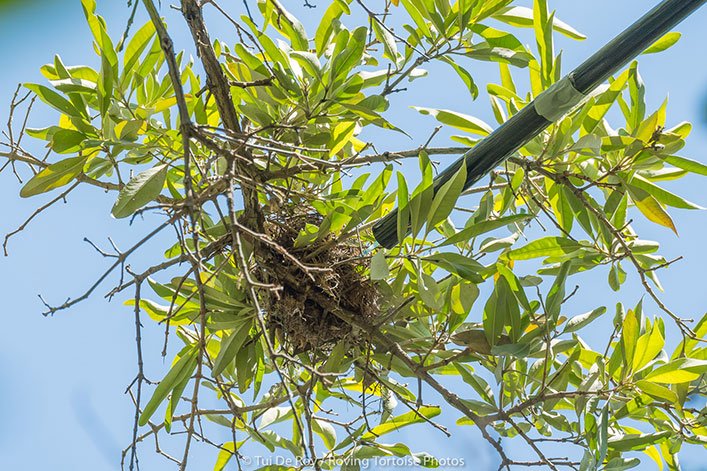
As Francesca Cunninghame explained,
“It’s great to know there’s a method that can protect nestlings from Philornis in the wild. However, mangrove finches and their nesting ecology in the tall mangroves don’t make this easy. We do our best to access the nests and protect the chicks and I think everyone out there in the field was really excited about these new methods. The finches are at such a critical stage that they really need intensive conservation during the breeding season and we must actively intervene to make sure as many as possible survive to fledge.”
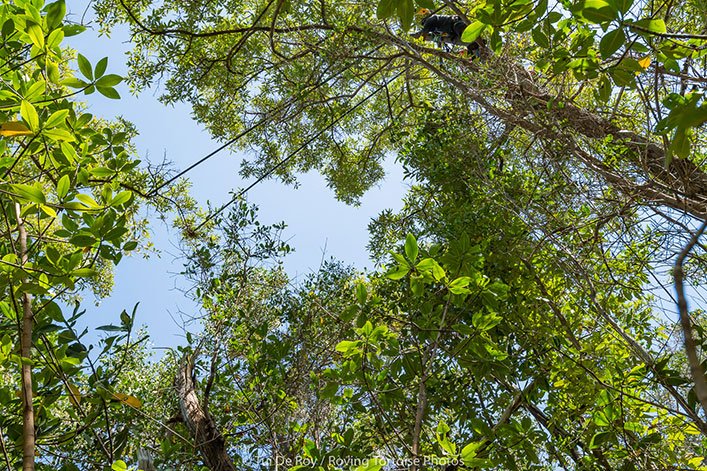
The excursion to Playa Tortuga Negra lasted two months with a five-person team from CDF with logistical support of the Galapagos National Park Directorate. Due to a lack of rain, which triggers mangrove finch breeding, only 10 breeding pairs were identified of the 18 which are sometimes present from previous studies, but the fact that seven fledglings and five nestlings were spotted in good health meant it was a successful nesting season. Unfortunately, nest failure was recorded; once due to Philornis parasitism (the injection had been unsuccessful at reducing the number of parasites) and three others due to predation. The team left the site, having injected permethrin in a total of 18 nests, hopefully bringing positive results for the breeding season.
Together with San Diego Zoo Global, and Durrell Wildlife Conservation Trust, CDF is evaluating the effectiveness of the use of permethrin to see if this method should be used in next year’s mangrove finch breeding season. However, so far the results have been very positive for the finches living and reproducing in the wild. “The other great news is that we saw four of the captive reared chicks including one female from 2016, which reared three chicks with a wild reared male” stated Francesca.
If you would like to help us save the mangrove finch from the brink of extinction, please donate today.
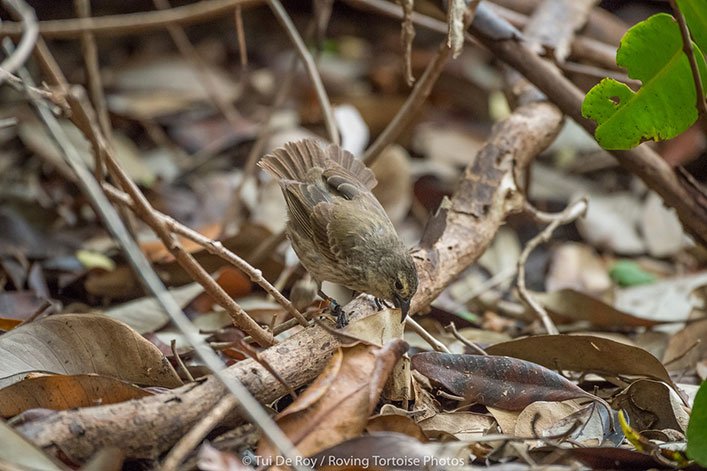
The Mangrove Finch Project is a bi-institutional project carried out by the Charles Darwin Foundation and Galapagos National Park Directorate in collaboration with San Diego Zoo Global, Durrell Wildlife Conservation Trust and Auckland Zoo. The Mangrove Finch Project is extremely grateful to the following donors for their support during the 2018 field season: The Leona M. and Harry B. Helmsley Charitable Trust, Galapagos Conservation Trust, Marguerite Griffith-Jones, GESS Charitable Trust, Decoroom Limited, and Holbeck Charitable Trust, and Friends of the Galapagos Switzerland.


